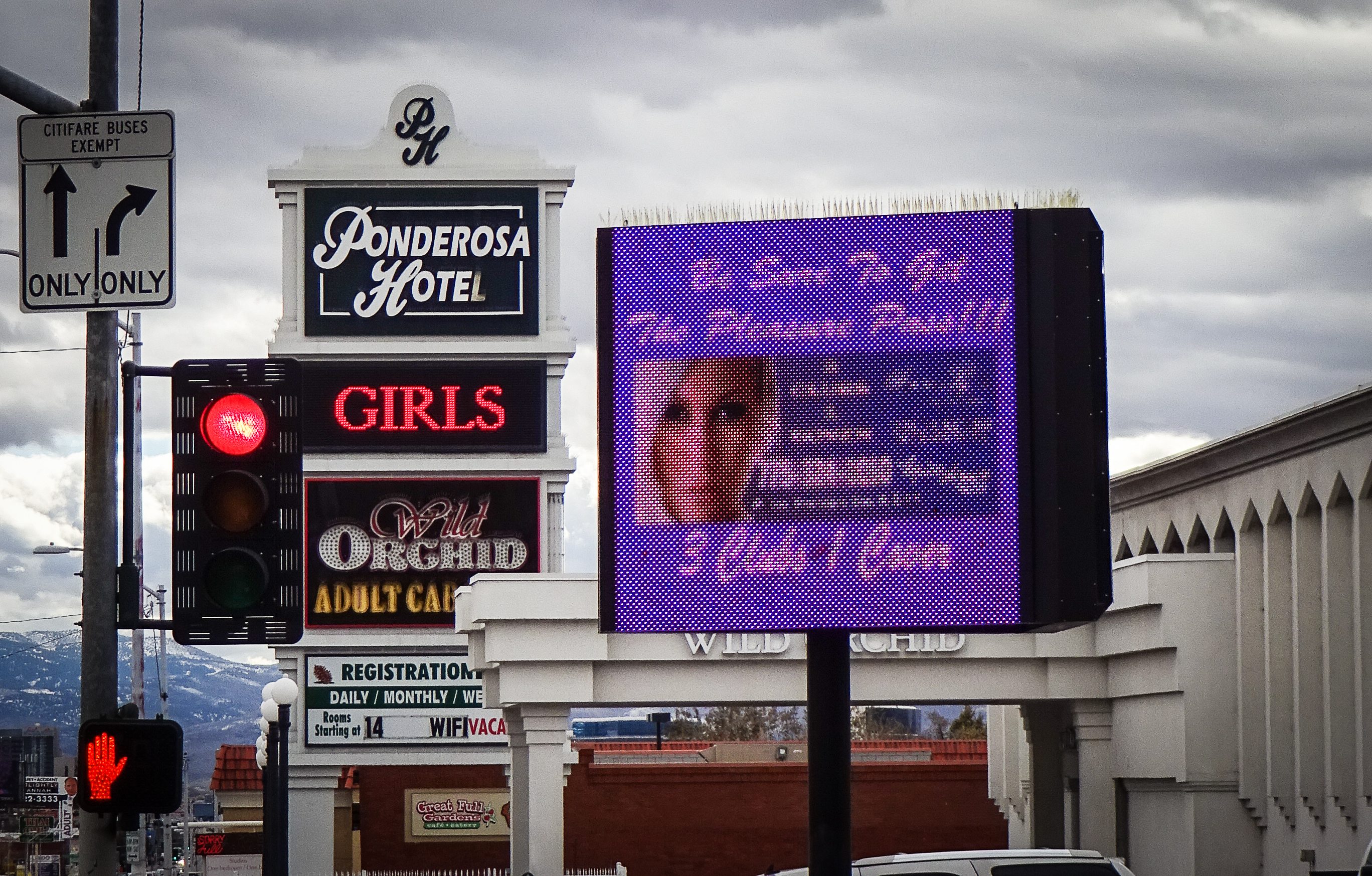Reno’s new digital sign ordinance is one step closer to becoming reality.
The ordinance was a compromise with last minute changes being made during Wednesday’s City Council meeting; this, after months of public comment, written input from the the community and hours of meetings by the council and the city’s planning commission.
Prior to the meeting, 37 written comments were submitted in opposition to the drafted ordinance.
One of the primary issues was digital sign brightness, and some may have noticed an immediate impact of the ordinance: The Grand Sierra Resort’s (GSR) signs have already decreased in brightness, said GSR spokesperson Mike Draper.
Draper said that the GSR has been working on the issue as soon as the council proposed the new ordinance at its previous, November 4 meeting. GSR will continue to reduce the brightness over the next two years in order to meet the requirements of the new ordinance.
The council voted to establish limits, measured in nits, of 5,000 nits for on premise digital signs during the day and 1,500 nits at night.
The non-profit Scenic Nevada does not think it’s enough.
“Contrary to what you may believe or what you were told by the sign industry, brightness is not the only issue that needs to be resolved regarding digital on-premise signs,” said Scenic Nevada’s Lori Wray. “The other issues are protecting aesthetics and private property from the nuisance of digital signs and reducing driver distractions.”
The new ordinance does not apply to billboards, an apparent source of confusion among the public, and a source of contention of those who assert that Reno has too many signs — digital or otherwise — already.
A photograph of Midtown’s sea of signage was shown by Wray, and it was not hard to see how signs in some areas of Reno are fighting a war for space, size and attention.
Also not in the new regulations is the ability to control sign content; thus, the controversial Wild Orchid sign, protected by the First Amendment, can be regulated for brightness, not necessarily its subject matter.
The council ended up voting on each section of the new ordinance with most members agreeing with the final language.
“I’m proud to say we have more regulations with LED signs than we’ve had before,” said Mayor Hillary Schieve. “One thing we can all agree with is … the brightness (of signs) needed to be adjusted.”
According to the city:
Council made six separate votes to approve an ordinance introduction regarding on-premise digital signs and referred it for a second reading and possible adoption. The ordinance will amend certain sections of the Reno Municipal Code Title 18, under “Additional Regulations for Animated Signs,” as follows:
- Animated signs shall only be allowed within 750 feet (changed from 300) of residentially zoned property with the approval of a special use permit;
- No animated sign shall exceed 1,500 nits between sunset and sunrise (night), and no animated sign shall exceed 5,000 nits between sunrise and sunset (day); and
No animated signs shall be allowed within 300 feet of the travel lane (changed from “right-of-way”) of State Route 431, Interstate 80 west of Robb Drive, U.S. 395 north of North McCarran Boulevard, and Interstate 580 south of South McCarran Boulevard. Any animated signs located within these areas which were in existence prior to December 2, 2015 may only be enlarged or relocated (“altered” and “replaced” were struck from the ordinance) with the approval of a special use permit.

